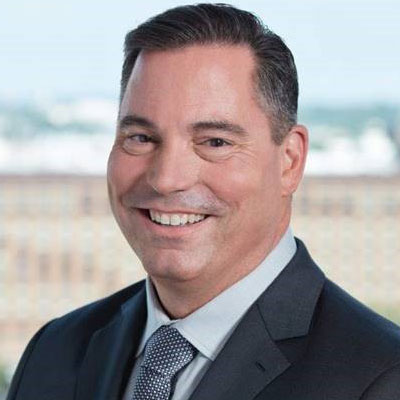Interview: Pressures On US Generics Industry Go Beyond Current Price Squeeze
Executive Summary
Generics firms in the US must fight back against brand industry attempts to thwart competition as well as regulatory obstacles looming on the horizon, while continuing to grapple with ongoing price erosion, says AAM president and CEO Chip Davis.
With generics filling nine out of every 10 prescriptions in the US and enabling ever-growing savings that totaled $265 billion in 2017 alone, onlookers could be forgiven for seeing the US generics industry as an unmitigated success.
The US market is frequently cited by other territories around the world as an example to aspire to, demonstrating the opportunities and economies that are available when generics are used to their full extent and are able to comprehensively penetrate the market. But, as Association for Accessible Medicines (AAM) president and CEO Chip Davis said in an exclusive interview, the US has problems of its own to contend with.

Chip Davis, AAM president and CEO
Continuing pricing pressures are combining with brand industry tactics to delay competition, as well as regulatory obstacles, to create a generics and biosimilars industry landscape that is undermining stability for local players. “Significant pressures threaten the future sustainability of competitive generic and biosimilar markets in the US,” Davis highlighted. “Manufacturers of these more affordable medicines increasingly face obstacles entering the marketplace, and staying in the marketplace, threatening reduced savings for patients and payers alike, while simultaneously increasing risks of drug shortages.”
As well as price pressure, “these challenges include efforts by certain branded companies to delay competition through legal and commercial exploits, changing market and reimbursement frameworks, and significant purchaser consolidation,” Davis outlined, adding that the generics industry must also contend with “policies that ignore the unique challenges facing generic and biosimilar medicines.”
On pricing, Davis observed: “Generics continue to face challenges due to sustained historic levels of price deflation.” Pointing to testimony in front of the US Senate by US Department of Health and Human Services (HHS) secretary Alex Azar earlier this year, Davis cited Azar’s comment that: “We may be driving [generics] prices so low that we’re creating manufacturing anomalies that lead to sole-source products there with others exiting.”
Major generics companies operating in the US are reacting to this pressure by making drastic changes:
-
Teva Pharmaceutical Industries Ltd. has carried out a portfolio review to pull out unprofitable product lines;
-
Sandoz International GMBH has just sold a significant chunk of its US business to Aurobindo;
-
Mylan NV is “evaluating a wide range of alternatives” for its business in the face of “negative trends and dynamics;”
-
and Perrigo Co. PLCrecently announced plans to separate its prescription unit from the rest of its business.
Davis pointed out that these pricing pressures were partly due to the reduction in the number of buyers dictating trends in the US market. “Increasing consolidation among pharmaceutical purchasers represents an increasing threat to maintaining a stable supply of generic medicines,” Davis insists. “In fact, today roughly 200 generic companies compete to sell to three purchasing groups that collectively control 90% of the market,” he noted, referring to Red Oak, Clarus One and Walgreens-Boots Alliance. “This often leaves generic companies without contracts and requires those companies to suspend marketing their drugs until such contracts become available again,” Davis explained. “This undermines future competitive success in the generic market as generic drug manufacturers are forced to maximize economies of scale and consolidate.” He warned that these conditions pose several dangers, including a higher risk of critical drug shortages.
“There are a range of steps that policymakers can take to address drug pricing,” Davis said. “Of these, we believe the most effective approach is to promote legislative and regulatory solutions that support stronger generic and biosimilar markets.”
For its part, the US Food and Drug Administration (FDA) had met its obligations in contributing to a stronger generics market, Davis acknowledged, with the revised Generic Drug User Fee Amendments (GDUFA II) introduced last year for a further five years proving a success so far. “The FDA has achieved all the commitment letter goals and metrics to date,” he said, “and they are on track to exceed the number of final and tentative approvals achieved in 2017.”
When it comes to addressing any problems with GDUFA, Davis noted, “AAM, along with three other trade associations, meets with the FDA on a quarterly basis to work through any implementation concerns.” He added that these meetings had been productive in the collective effort to identify and resolve any challenges related to achieving the commitment letter goals.
Originators Gaming The System
However, Davis was less complimentary when it came to the US intellectual property (IP) framework, which he said was enabling originators to maintain unjustified exclusivities and was also contributing to pricing issues that were driving healthcare costs higher in the US. “AAM supports true innovation,” Davis maintains, “but in the past several years, the US patent system has allowed brand manufacturers to obtain dozens of patents on certain drugs and to obtain decades of monopoly protection.”
He argues that the IP system is helping to drive the US drug pricing crisis. “We believe it is important to take a comprehensive look at how policymakers can continue to incentivize innovation but stop some of the gamesmanship and patent thickets that have inappropriately delayed biosimilar competition.”
A key route in challenging patents that has become increasingly popular with generics and biosimilars firms in recent years is the inter partes review (IPR) process, through which firms can challenge patents in front of the US Patent and Trademark Office’s (PTO’s) Patent Trial and Appeal Board (PTAB) rather than through direct patent litigation. A recent Supreme Court ruling upheld the IPR process.
“AAM supported the court’s decision finding IPR to be constitutional and patents to be publicly granted rights,” Davis attested. “Given the use of the patent and regulatory system by some brand name drug companies to extend their monopolies inappropriately, tools such as IPR are necessary to obtain rapid review of questionable patents. The branded industry in Washington has lobbied aggressively to try and get Hatch-Waxman cases exempted from the IPR process, to date unsuccessfully,” he pointed out.
Other threats to the Hatch-Waxman framework that underpins the US generics market are on the horizon in the form of recently proposed modifications to the 180-day market exclusivity boon that is awarded to first-filer generics that successfully challenge brand patents through a ‘paragraph IV’ certification.
Davis is forthright in his criticism of the mooted change. “AAM believes this proposal would undermine one of the most critical incentives for generic medicines to come to market,” he said, “hindering price competition and patient access.”
The proposal would make the tentative approval of a subsequent generic drug applicant that is blocked solely by a first applicant’s 180-day exclusivity, where the first applicant has not yet received final approval, a trigger of the first applicant’s 180-day exclusivity. “This is unnecessary because the statute already contains provisions that address situations where 180-day exclusivity may block approval of additional generic products for extended periods of time. AAM is concerned this policy proposal could harm generic competition,” Davis said. Reducing or otherwise undermining the incentive for first-to-file generics threatens the foundation of the system that has generated trillions of dollars in savings for patients and payers, he said.
This article was first published by In Vivo’s sister publication Generics Bulletin in October 2018. It is part of the Outlook 2019 series – an annual collection provided exclusively to subscribers of Informa Pharma Intelligence publications.
